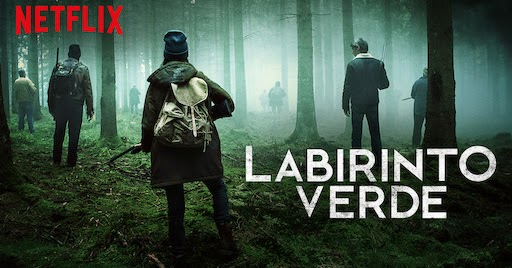Ilmarinen
Usuário
E vencedor do Printz Award 2016
Empolgado com ele e com a autora aí. Não é uma leitura fácil, o livro parece ter aquele tipo de prosa lírica e metafórica "sinestésica" do Ray Bradbury em Something Wicked this Way Comes, mas, tem um climão SUPERLEGAL e original, algo na linha de Lovely Bones encontra Twin Peaks e os livros do Alan Garner com uma temática similar*
*O tal de Red Shift ( babado por Alan Moore e Grant Morrison e , pelo jeito, uma das inspirações pra From Hell) e a conclusão da Trilogia Alderley, Boneland que, por sua vez, diga-se, tem um título algo similar ao original desse aqui, Bone Gap, totalmente ferrado pela escolha da editora nacional que, pelo jeito, se esqueceu de que há TROCENTOS livros de fantasia traduzidos aqui com o termo "portal" incluído.
Fica a recomendação. Quando acabar de lê-lo e compará-los com os citados livros do Alan Garner farei outra postagem mais detalhada com os paralelos e observações.
Entrevista da autora que foi "perdida" na Net copiada com o Cache do Google
Empolgado com ele e com a autora aí. Não é uma leitura fácil, o livro parece ter aquele tipo de prosa lírica e metafórica "sinestésica" do Ray Bradbury em Something Wicked this Way Comes, mas, tem um climão SUPERLEGAL e original, algo na linha de Lovely Bones encontra Twin Peaks e os livros do Alan Garner com uma temática similar*
*O tal de Red Shift ( babado por Alan Moore e Grant Morrison e , pelo jeito, uma das inspirações pra From Hell) e a conclusão da Trilogia Alderley, Boneland que, por sua vez, diga-se, tem um título algo similar ao original desse aqui, Bone Gap, totalmente ferrado pela escolha da editora nacional que, pelo jeito, se esqueceu de que há TROCENTOS livros de fantasia traduzidos aqui com o termo "portal" incluído.
Fica a recomendação. Quando acabar de lê-lo e compará-los com os citados livros do Alan Garner farei outra postagem mais detalhada com os paralelos e observações.
Galera Record lança livro finalista do National Book Award
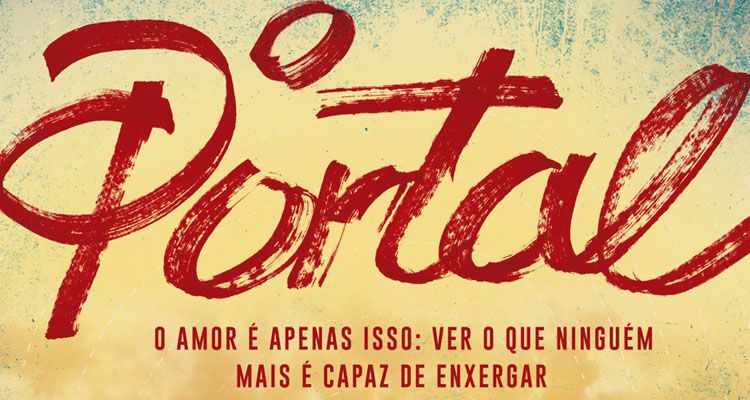
12/07/2017
Leandro Stenlånd
0 Comentários
0
A Galera Record acaba de lançar o livro ‘O portal’, onde Laura Ruby fala sobre as consequências da supervalorização da beleza física e do quão profundas podem ser as marcas deixadas por elas. Além de O portal, Laura Ruby é autora de diversos livros, tanto para o público YA quanto adulto. Como Lily’s Ghosts, Good Girls e Play Me and Bad Apple. Você pode visitá-la online em www.lauraruby.com.
Finn e Sean O’Sullivan sabem muito bem o que é ser abandonados. Depois que seu pai morreu, a mãe dos garotos partiu com outro homem para uma vida nova, deixando os irmãos sozinhos em Bone Gap. Isto é, até a bela e misteriosa Roza surgir na vida dos dois. Finn logo fica doido pela garota — não por paixão, como todo mundo acredita, mas porque Sean voltou a sorrir graças a ela. O interesse do mais novo dos irmãos está, na verdade, em Petey, mas ninguém na cidade acredita nisso porque o garoto é bonito demais para ela.
Quando Roza some de maneira repentina, o povo de Bone Gap não fica surpreso. Ainda que Finn tenha testemunhado seu sequestro e visto a garota ser arrancada dos milharais por um homem perigoso cujo rosto ele não consegue se lembrar, parece muito mais compreensível para todos na cidade que os irmãos tenham sido abandonados mais uma vez. Até mesmo para Sean.
Enquanto Finn tenta seguir sua vida com a culpa de não ter feito nada para salvá-la, a forte e independente Roza se vê cativa de um homem que – assim como tantos outros em sua vida – a quer apenas por causa da sua beleza. Finalista do National Book Award e vencedor do Printz Award, O portal é uma história comovente sobre amor, perdas e magia.
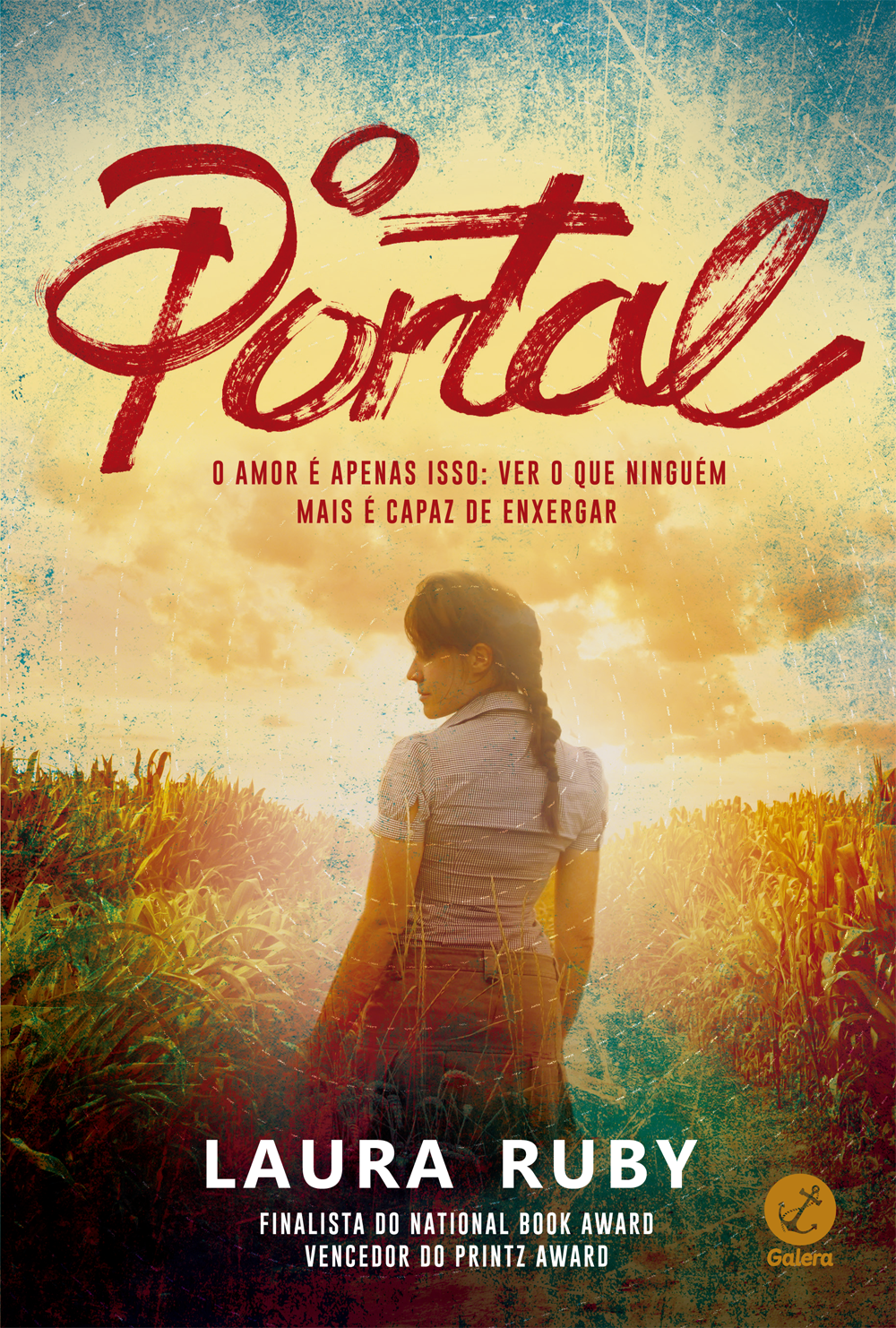
O PORTAL
(Bone Gap)
LAURA RUBY
Páginas: 308
Preço: R$39,90
Tradução: Larissa Helena
Editora: Galera || Grupo Editorial Record
Comentários do Internauta
0 Comentário(s)
Entrevista da autora que foi "perdida" na Net copiada com o Cache do Google
Laura Ruby
 Bone Gap
Bone Gap
(Balzer + Bray/HarperCollins Children's Books)
ISBN: 978-0062317605
Interviewed by Tim Manley
I read Bone Gap in a single night. I didn’t intend to, I just couldn’t put it down. I maneuvered between four different positions on my couch, refusing to stop reading just because my neck hurt, or I had to “wake up in four hours.” When it was over, my eyes scanned the chairs and shelves of my living room trying to figure out what had moved, because I knew something was changed.
Laura Ruby’s Bone Gap opens on a Midwestern town where a girl — Roza — has been kidnapped, and a boy — Finn — is the only witness. Finn cannot successfully describe the kidnapper, so he places the blame of Roza’s disappearance on himself. We follow each of their perspectives, the mystery unfolding with a much larger cast of characters in the town. What seems to be a story of a kidnapping turns into something far more unusual, and ultimately becomes a moving meditation on seeing others and being seen.
Laura Ruby’s previous work includes novels for adults, teens, and children, running the spectrum of realism to fantasy. Bone Gap falls somewhere in the middle, reading the way a folk song sounds: timeless, mythical, and strange.
Tim Manley: Bees and the organization of their community figure prominently in Bone Gap. What do you find most compelling about bee life?
Laura Ruby: Since I was a kid, I've been obsessed with all sorts of insects—praying mantises, beetles, dragonflies, butterflies—but bees are particularly fascinating to me, not least since bee colonies are primarily made up of sisters (okay, half-sisters) that cooperate in the care of the young, in cleaning the hive, in foraging for food, and the defense of the nest. But I'm mostly fascinated with bees because bees dance to communicate where their sister bees might find the best flowers. The dance tells other foragers the distance and direction to the food source. No matter how many times I've read about the science behind the dance, there's something profoundly magical about it.
What was it like to be so absolutely certain of your own future? So sure of the world and your place in it? How would a boy like that handle himself when he finds out that the world isn’t what it seems to be?
TM: Bone Gap draws on the Greek myth of Persephone, but also creates its own mythology. Corn whispers and rivers are more than just rivers. Can you tell us about any songs, books, or memory-moments that helped you uncover the mythology of the Midwest?
LR: I moved from the East Coast to the Midwest a long time ago and it was a much more difficult adjustment than I ever thought it would be. (I didn’t realize I was actually from somewhere until I left.) In some ways, I’ve been trying to figure out the Midwest ever since I arrived. Why do people wear so much flannel? Why is everyone so nice? What is with this Cubs obsession?
I remember doing a lot of school visits in downstate Illinois, which meant I spent hours driving by myself through the cornfields. I was almost hypnotized by those cornfields, by the sound of the wind rustling through the stalks, the sight of those walls of green rising up on either side of the car. A great number of the kids I met on those visits were from farming families; one absurdly polite sixth grade boy had plans to study agriculture at the University of Illinois and take the knowledge back to his family’s business. He was so sweet and so young, so fine and upstanding, and so certain of his own future. I was confounded by this kid, but also fascinated. What was it like to grow up in the middle of those cornfields with the corn whispering at you all the time? What was it like to be so absolutely certain of your own future? So sure of the world and your place in it? How would a boy like that handle himself when he finds out that the world isn’t what it seems to be? That he, himself, isn’t?
But I’d have to say that I wasn’t thinking about the mythology of the Midwest in general as much as the mythology of one particular town in the Midwest. Bone Gap is a love letter to and a fairy tale about this single fictional town nestled in the corn.
TM: The novel is written in the third person, and we begin closely tied to the perspectives of Finn and Roza. As we go on, we’re given chapters focusing on other characters. Was this always the organization of the book? Why decide to bring those perspectives in when you did?
Most of my books are multi-vocal in some way, and have flashbacks and, sometimes impossible, flash-forwards. That’s because I don’t feel like I live in any one particular moment....My brain hops all over the place and I’ve learned to let it.
LR: The organization of the book changed a lot over time. First of all, there were originally many more points-of-view, including the POV of Roza's grandmother, Babcia; the Scarecrow; Calamity Jane (Finn’s cat); and one of Petey's beehives. I cut some of these chapters and others to streamline the narrative and then arranged and rearranged the rest many times over. Roza's chapters in particular got a lot of attention because her storyline is shaped more like a corkscrew, with the inciting incident occurring two-thirds of the way through. I wanted to make sure that this storyline was as clear and tense as I could make it, while still preserving a lot of the mystery surrounding her character up front.
I also wanted to surprise the reader at key moments in the plot. For example, just when you think Sean is another stoic, beefy, hero-type - strong and silent, the kind of guy who might swoop in and save the day because that’s his job - you get his POV, and see how damaged and heartbroken he is, and realize that this is not necessarily the person you can rely on to save anyone, least of all himself.
But the bottom line: I’m simply not as interested in writing from one point-of-view, or in a linear fashion. Most of my books are multi-vocal in some way, and have flashbacks and, sometimes impossible, flash-forwards. That’s because I don’t feel like I live in any one particular moment. I’m writing the answers to these questions right now, but I’m also thinking about other questions I’ve answered, past interviews I’ve given last week and ten years ago, the new book I’ve just finished, other books I want to write, etc. My brain hops all over the place and I’ve learned to let it. Revision, for me, is a matter of wrestling my narrative into some semblance of emotional, if not temporal, sense.
TM: You’ve mentioned elsewhere that an earlier draft of the novel had less magic. How do you successfully build a world that succeeds in being both believably real and magical?
LR: I would say that I didn’t layer magic on top of the narrative as much as uncover the magic already inherent in the story; the more I dug into the setting and into the characters, the more magic I found.
As for how one builds a world that is both believably real and magical, well, I wonder if you have to believe at some level that magic is real, like the dance of the bees.
TM: How is Bone Gap dismantling the patriarchy?
All my main characters come to subvert the expectations forced upon them by a sexist culture.
LR: Hmmm. I’d say that Bone Gap explores the damage done to both boys and girls under a patriarchal system. The O’Sullivan brothers, Finn and Sean, are both held to ridiculous, hyperbolic standards of masculinity, and ultimately, both of them find it impossible to conform to them. (Finn because of his general dreaminess and prettiness and his passion for an extremely unconventional looking girl, Sean because he simply can’t be everyone’s hero the way he’s expected to be).
And because beauty is the only real worth a girl has in this world and in the world of Bone Gap, my female characters, Roza and Petey, are judged by appearances alone. But Roza refuses to overvalue her own preternatural beauty in the way that the men around her seem to; what she loves most about herself isn’t her face, it’s her own competence. Petey, a girl who has been deemed ‘ugly’ by her community, has the temerity to see herself as interesting and unique, even beautiful, despite what she’s been told over and over again.
So, all my main characters come to subvert the expectations forced upon them by a sexist culture. Had I set out to do this up front, however, said to myself, “I will now commence to write characters that subvert sexist expectations and/or dismantle the patriarchy” I would have ended up with something clunky and obvious. (Which is not to say that works of art aren’t/can’t be inherently political, just that I don’t begin with these ideas; they are simply part of my worldview and permeate the stories I tell). In any case, I set out to write a book about love and bees, kittens and monsters. Worked out better for everyone.
Tim Manley is the writer and illustrator of Alice in Tumblr-land: And Other Fairy Tales for a New Generation, and the co-writer of The 10 Letters Project. His one-person show, Feelings, debuted this year at the New York International Fringe Festival. He is online at timmanleytimmanley.com.
** Posts duplicados combinados **
Resenhas de Boneland do Alan Garner feitas por Neil Gaiman e a falecida Ursula K. Le GuinBoneland
Rate this book
1 of 5 stars2 of 5 stars3 of 5 stars4 of 5 stars5 of 5 stars
Boneland (Tales of Alderley, #3)
by
Alan Garner
Neil's review
Dec 03, 2013
it was amazing
Over 50 years ago Alan Garner wrote The Weirdstone of Brisingamen and its sequel, The Moon of Gomrath, two books of magic and myth, featuring the children Colin and Susan. They encounter a wizard who guards sleepers beneath the hills – Arthur and his knights, perhaps – sleepers who will wake to save us in our time of greatest need. The children encounter elves and dwarfs, goblins and killer cats, battle the evil shape-shifting Morrigan, and make their way through a patchwork of mythic events and battles, culminating, at the end of The Moon of Gomrath, with a Herne-like Hunter and his men riding their horses to meet the nine sisters of the Pleiades, leaving Susan, who needed to be with them, behind, wanting to go the stars, and Colin only to watch.
(There are well-drawn characters in those books, but they are not Colin or Susan. And the landscape of Alderley Edge is the strongest character.)
Garner continued creating mythic fantasy out of the matter of Britain, building, reimagining and recreating tales from the Mabinogion and from a hundred other sources, and then he began writing novels intended for adults, stories hewn and chipped from the past. (The past is always with us in Garner. The stones have stories.)
There was to be a third novel of Colin and Susan, but for fifty years Garner did not write it.
In Boneland, he also does not write it, although he describes it, implies it, tells us its shape. Instead he gives us, what? A fourth book? A coda? Either way, it is an adult novel about loss and history and memory and mind, a link between the present and prehistory, a place where everything Garner has made before comes together.
Colin has grown up to be a brilliant, but extremely troubled, astrophysicist. Susan is not there. Colin is autistic, has problems with memory (he remembers everything after the age of 13, nothing before), cannot relate to other humans, is searching the sky for intelligent life, and hunting for his sister in the stars. As the book begins he is being released from a hospital after some kind of breakdown.
Boneland is a realistic novel of landscape, inner and outer, past and present. It becomes a novel of the fantastic toward the end: perhaps old magics have risen to show Colin the way out, perhaps he has conjured them himself as he confronts his demons and his pain. I do not know if the conclusion of this book makes sense if you have not read the first two books, and I am not entirely certain whether reading the first two books will make it easier to read this one. Boneland demands a lot of the reader, either way. But it returns more than it demands.
The characters are well drawn – Meg, the too-good-to-be-true therapist and Bert, the salt of the earth taxi driver, linger in the memory long after the book is done. The Watcher, who provides the novels alternate point of view, gazing out from the caves of prehistory, gives us an affecting and powerful look at a mind ten thousand years away, and a way of looking at the world that is not ours, or Colin's. As the Watcher story intersects with Colin's story, the Weirdstone novels also conclude (although they conclude in negative space, as if we are seeing the after effects of events in a book unwritten) and Colin's story concludes with them.
Trying to express how and why Alan Garner is important is difficult. He does not write easy books. His children's books were powerful and popular, but never easy or comforting; his adult novels are lonely explorations of present and past. He is a master of taking the material of history, whether myths and stories or landscapes and artifacts, and building tales around them that feel, always, ultimately, right – as if, yes, this was how things were, this is how things are. He is a matter-of-fact fantasist, who builds his fantasies solid and real. Boneland feels like the book you write when you can no longer muster the belief in magic to write about elves and wizards in caves, but you can write about the older magics, the flint-knapping workings of ancient times, and you can believe in the power of the mind, and the crags and caves and outcrops, you can believe in the landscape, because the landscape is always there. And you can still believe in sleepers under hills, believe in the legend of the wizard buying a horse that began The Weirdstone of Brisingaman.
The words Garner chooses, carves, inserts into his prose are perfect. He deploys short, accurate words better than anyone else writing in English today, and he makes it look simple.
Boneland is the strangest, but also the strongest, of Alan Garner's books. It feels like a capstone to a career that has taken him, as a writer, to remarkable places, and returned him to the same place he started, to the landscape of Alderley Edge and to the sleepers under the hill.
Boneland by Alan Garner – review
Ursula K Le Guin on the long-awaited follow-up to two fantasy classics
Ursula K Le Guin
Wed 29 Aug 2012 10.05 BST First published on Wed 29 Aug 2012 10.05 BST
Shares
45
Comments
52
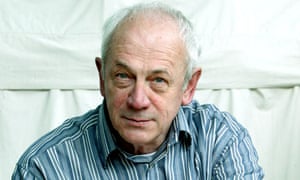
Alan Garner … probing the human psyche. Photograph: Murdo Macleod
Boneland is an adult sequel to the two books for children Alan Garner published in 1960 and 1963. Colin and Susan, in The Weirdstone of Brisingamen and The Moon of Gomrath, are twins of about 12, rushing about on non-stop miraculous adventures and accepting supernatural events with almost superhuman placidity. At the end of the second book, Susan appears to be destined for an otherworldly fate or role. At the beginning of this third book, she has vanished. Her brother Colin has aged some 30 or 40 years, and their author nearly 50.
Fifty years is a long time between books, yet it seems right and natural that Garner should need five decades to gyre back round to where he began, the legend-haunted landscape of Alderley Edge, to be able to follow his story deeper into the human psyche and the dark abysm of time.
Colin has become a brilliant astrophysicist, ornithologist, and all-round savant with five or six masters' degrees, as well as being an outstanding cook, carpenter, and social misfit. He has total recall of everything that has happened to him since the age of 13, but has lost all memory of the years before that, along with his sister, and his intrepidity. The almost phlegmatically fearless child has become an anguished, supersensitive, self-absorbed man whose incoherent obsessions are driving him mad.
Colin is searching for his sister and his sanity, but the wellbeing of the world is also at stake. The descendant of men who danced and sang on Alderley Edge to keep the stars in their courses and bring the sun back from winter death, Colin is a shaman, heir of the shamans of the ice age and ages long before. He needs to find his own balance because his job is to keep the balance of the world. The rocks and caves of a reef of Triassic sandstone in Cheshire are the axis of the balance, the navel of the universe, the centre that must hold.
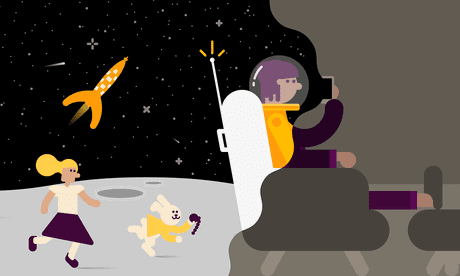
Sign up for Bookmarks: discover new books in our weekly email
Read more
That centre is also in a cave in Delphi, an island in the Klamath River of California, a thousand places on Earth, and the Earth itself as revealed to the astronaut Rusty Schweickart on a walk in space – wherever human beings feel the depth of their connection to the world and take it as a sacred responsibility.
Yet this universal connection is felt as deeply local. This place is the sacred place. More mythmaker than fantasist, Garner names his chosen, actual landscape minutely, feature by feature, stone by stone, relishing the old place-names and the grand vocabulary of geology, weaving the words into a litany of confirmation, the endless repetition that keeps the end from coming, the rhythmic dance on the world's edge that maintains the world. Alderley Edge is the scene of a timeless ritual that must be re-enacted over and over by ignorant and ephemeral mortals. Personal tragedy and redemption are subsumed in the cosmic vision.
No wonder that the people of his story are less characters than masks, types, archetypes. But as imaginative literature reclaims the territories forbidden it by realism, and moves back from Elfland towards the outskirts of Manchester, it treads on risky ground. Readers looking for more than mere adventure expect characters whose behaviour and reactions are humanly comprehensible.
The child twins Colin and Susan were semi-characterless actors in a fantasy tale. Colin is both severely disturbed radio-astronomer and the man chosen from his generation to "look after the Edge" – and how to reconcile these roles in a character in a modern novel? How are the pyschic sufferings of a man so anachronistically fated and so emotionally crippled to be made comprehensible?
The author's success hinges partly on his division of the character into two – the 21st-century scientist Colin and an unnamed stone age ancestor. But in the end, his success must depend on the reader's willingness to be teased through an imaginative labyrinth by allusions, hints, puzzles, and tricks such as unascribed dialogue and undescribed location. The process of Colin's healing, the stages of therapy, the un-nesting of image within image, is fascinating, but the narration demands that the reader let the author manipulate and control, just as Colin is manipulated by the analyst.
And she, in the end, appears to have been a witch or goddess: in a serious novel, this is again risky.
Garner can count on the trust and admiration of many of his readers to see him through it, but my trust and admiration, though great, weren't always sufficient. No rereading has yet given me a clue to the meaning of the first eight lines of Boneland. Is the all-wise, wise-cracking, motorcycle-riding psychoanalyst the Witch-Crone or the Moon Mother? Is Susan one of the Pleiades? Is truth, as Garner would have it, not attainable through knowledge, only through belief?
Where all the teases and all the risks pay off, for me, is in the shadow-story of the man who "looked after the Edge" so long ago, the solitary artist-shaman of the ice age. These sections of the book are told in a charged, elliptical, symbolic, highly concrete language: "He cut the veil of the rock; the hooves clattered the bellowing waters below him in the dark. The lamp brought the moon from the blade, and the blade the bull from the rock. The ice rang."
You figure out what it's all about gradually; as with poetry, learning another language, learning to see and think differently, the demands and rewards are intense and real. It is this element of the book, in which the obsessions come into focus and a true balance is glimpsed, that will bring me back to Boneland, knowing I'll find there what no other novelist has ever given us.
• Ursula K Le Guin's Lavinia is published by Phoenix.







